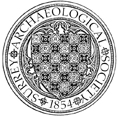North of Place Farm, Bletchingley
Excavation by M Williams of WA revealed evidence of a substantial walled structure possibly associated with two parallel boundary walls, and the remains of a possible fish pond, 200m north of the inner gatehouse of Bletchingley Place, the property given by Henry VIII to Anne of Cleves as part of her divorce settlement. The suggestion is that the structure may be a northern gatehouse leading from the walled gardens surrounding Bletchingley Place into the deer park to the north.


